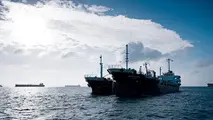IMO greenhouse gas cuts present unprecedented challenge for shipping
The International Maritime Organization is set to throw up another challenge for the shipping industry with Friday’s greenhouse gas cuts deal, requiring the industry to come up with GHG-free vessel designs over the next decade at the same time as it struggles with other regulations.

The International Maritime Organization is set to throw up another challenge for the shipping industry with Friday’s greenhouse gas cuts deal, requiring the industry to come up with GHG-free vessel designs over the next decade at the same time as it struggles with other regulations.
The IMO’s Marine Environment Protection Committee adopted a strategy requiring the shipping industry to reduce its total GHG emissions by 50% from 2008 levels by 2050, as well as cutting carbon dioxide emissions “per transport work” by at least 40% by 2030.
The cuts “per transport work” may be achieved by measures like slow steaming to maximize fuel efficiency in the global fleet. But outright cuts to the industry’s total emissions will be much harder, given that the global fleet is expected to continue growing over the coming decades as global trade increases.
These cuts imply new vessels capable of running on GHG emission-free power sources will need to start coming into service in the 2030s. The challenge to shipping is unprecedented as it remains largely unclear what these power sources will be.
When the IMO decided in 2016 to cut marine fuel sulfur limits to 0.5% in 2020, the range of options for how shipping could implement the cuts were reasonably familiar to the industry. This time around, a set of largely untested technologies are on offer.
A report from the OECD’s International Transport Forum in March arguing 100% carbon dioxide cuts were achievable for shipping by 2035 carried much weight in this week’s discussions, as proponents of more radical cuts used it to support their arguments. The report advocates efficiency measures such as slow steaming and more hydrodynamic hull designs in the short term, while moving toward power sources including methanol, hydrogen, ammonia and wind power in the longer run.
In the next few days the focus will shift to whether proponents of more radical cuts are satisfied with the deal. IMO delegates and officials are hoping to avoid the possibility of harsher measures being imposed at a regional level by authorities unimpressed by the results achieved at the global level.
STARTING POINT
Before this week’s meeting, several delegations argued only 100% GHG cuts by 2050 would be consistent with the 2015 Paris Agreement’s goal of limiting global warming to 1.5 degrees Celsius over pre-industrial levels. The words “at least” in the strategy for the 50% cuts may have been key to securing the support of these more ambitious countries, suggesting that the cuts may be intensified at a later date.
In comments Friday before the MEPC adopted the strategy, IMO Secretary General Kitack Lim characterised the deal as a “compromise position” that “may not be satisfactory to all”.
“Please remember, this initial strategy is not a final statement but a key starting point,” he said.
The EU has previously threatened to include shipping in its emissions trading system if the IMO does not have a satisfactory GHG emissions strategy in place by 2023. IMO delegates and officials are hoping the EU will seek to toughen the cuts at future MEPC meetings rather than imposing its own measures at the regional level.
“The agreement reached today at the IMO is a significant step forward in the global efforts to tackle climate change,” said EU Commissioner for transport Violeta Bulc and EU Commissioner for energy and climate action, Miguel Arias Canete, in a joint statement Friday.
“The shipping sector must contribute its fair share to the goals of the Paris Agreement,” they said.
While the EU had sought a higher level of ambition, Friday’s deal was “a good starting point that will allow for further review and improvements over time,” the Commissioners said.
“For this initial strategy to succeed, it is now crucial that effective reduction measures are swiftly adopted and put in place before 2023. Preparations on longer term actions should also begin,” the Commissioners said.
The IMO’s agreement makes it less likely that the EU will bring shipping emissions into its legally binding EU Emissions Trading System. The EU has said it would bring shipping emissions into the EU ETS in 2023 if the IMO failed to take meaningful action to reduce GHG emissions by 2021.
DECARBONIZATION ROAD
Major global shipping industry association BIMCO on Friday also welcomed the IMO agreement.
“The IMO has done something no one has done before: set an absolute target for emissions reductions for an entire industry,” the group said in a statement Friday.
“It is a landmark achievement in the effort to reduce emissions, and something that every other industry should look to for inspiration,” said BIMCO deputy secretary general Lars Robert Pedersen.
“The strategy shows that there is only one road ahead, and that is the road towards decarbonization,” he said.
“In BIMCO we believe the industry can deliver on this target — even if we don’t know exactly how, yet,” Pedersen said.
Global shipping emissions peaked in 2008 and are already being decoupled from economic growth, but new technology and procedures will be required to bring emissions to zero in the second half of the century, he said.
Another question on the shipping industry’s mind will be how the GHG strategy will affect plans to implement the IMO’s 0.5% sulfur cap on marine fuels in 2020. This week’s deal is likely to add to uncertainty over that regulation as it encourages the “wait-and-see” attitude already prevalent among many shipowners and bunker sellers.
Refinery owners considering expensive upgrades to increase their middle distillate production to meet new demand from the shipping industry may no longer consider the investment worthwhile if large numbers of shipowners are set to turn away from oil within the next two decades.
Equally, shipowners mulling over the benefits of LNG bunkering may now pause for further analysis. While burning natural gas will deliver some GHG emission reductions compared with oil, the reductions will not be enough to meet the cuts envisaged by the IMO’s new strategy.


